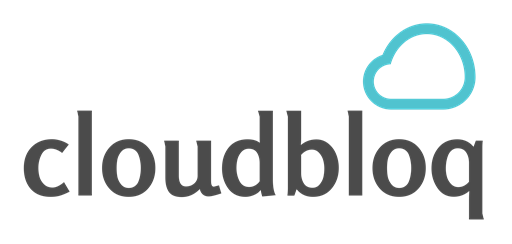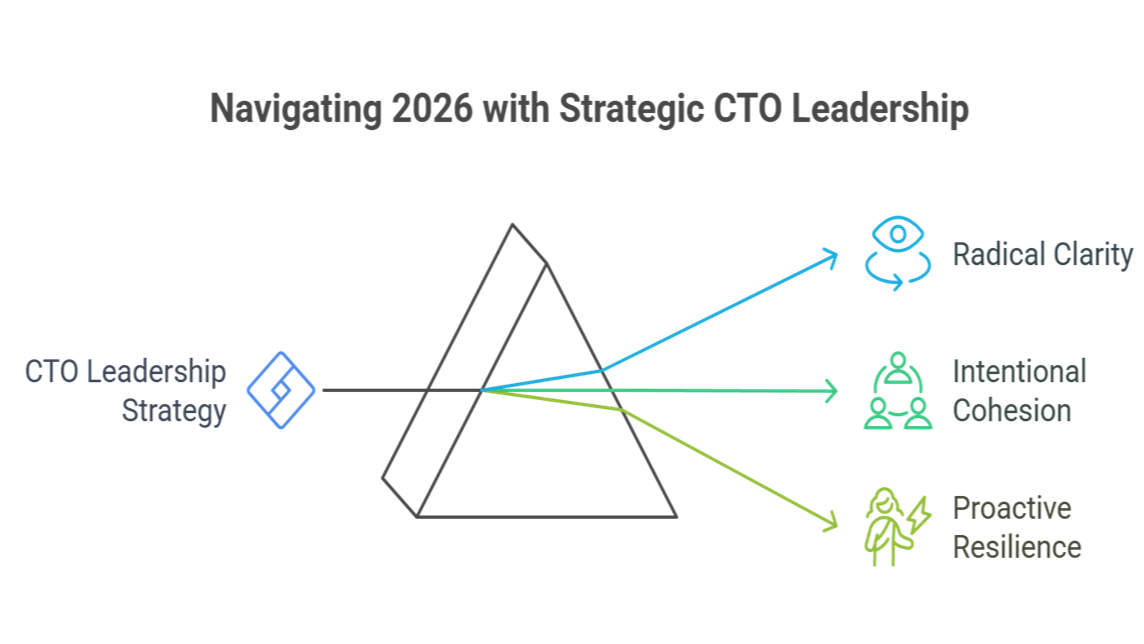Lead Tech Teams Through Uncertainty: The 2026 CTO Guide
The ground is shifting beneath your feet. As a Chief Technology Officer, you’re used to change, but the current landscape is a different beast entirely. It’s not just a new framework or a faster chip. It’s a fundamental rewrite of how your team works, what they’re working on, and why it matters.
Consider this: By 2026, Gartner predicts over 80% of enterprises will have used Generative AI (GenAI) APIs or models, or deployed GenAI-enabled applications in production environments. That’s not a distant future; that’s next quarter. This single trend, combined with persistent economic volatility and the “new normal” of fragmented hybrid teams, has created a perfect storm of uncertainty.
Your engineers feel it. They’re wondering if their skills are still relevant, if their project will be funded next month, or if that Slack message from a remote colleague was intentionally curt. Your challenge in leading technical teams through uncertainty has officially surpassed your role as a technical architect. You are now the Chief Stability Officer, the Chief Empathy Officer, and the Chief Vision Officer, all rolled into one.
This isn’t another high-level post about “being agile.” This is the modern CTO guide to navigating the chaos of late 2025 and 2026. This playbook will equip you with a 3-pillar strategy to build clarity, cohesion, and resilience—turning your engineering organization from a group of anxious individuals into a focused, antifragile unit.
The New Uncertainty: Why 2026 is Different for CTOs
For decades, a CTO’s CTO challenges were primarily technical: scaling infrastructure, choosing the right stack, or managing tech debt. Today, those are the easy parts. The real challenge is human. We’re facing a triad of disruption that hits engineering teams harder than any other department.
The Triad of Disruption: AI, Economy, and Hybrid Work
- The GenAI Revolution: This isn’t just a new tool; it’s a new teammate. Developers are using AI copilots to write, debug, and test code, which introduces profound questions. How do you measure productivity? How do you ensure code quality and security? And the biggest one: How do you calm the (often unspoken) anxiety about job displacement?
- Persistent Economic Pressure: The “growth at all costs” era is over. Boards are demanding efficiency, profitability, and clear ROI. For CTOs, this means smaller budgets, headcount freezes, and intense pressure to do more with less. You’re forced to make hard calls, often cutting “nice-to-have” R&D projects that keep engineers engaged.
- The Hybrid/Remote Fault Line: The debate is over; hybrid work is here to stay. But we’re still terrible at it. Proximity bias, communication silos, and a two-tier culture (in-office vs. remote) are fracturing teams. A study from Atlassian found that 71% of knowledge workers feel communication is siloed, creating a massive drag on cohesion.
The Cost of Failure: Burnout, Churn, and Stalled Innovation
What happens if you don’t actively manage this uncertainty?
- Top Talent Walks: The best engineers crave impact and stability. If your environment is chaotic, they will leave for one that isn’t. According to a 2024 developer burnout report, 45% of developers feel more burned out than they did a year ago.
- “Shadow” Innovation Stops: The small, creative side projects that lead to big breakthroughs? They die. Scared, uncertain engineers don’t take risks. They stick to the spec, keep their heads down, and innovation flatlines.
- Paralysis Sets In: Your team becomes reactive, not proactive. They wait for perfect instructions because they’re afraid to make a mistake. Velocity grinds to a halt.
Leading technical teams through uncertainty isn’t a “soft skill”—it’s the most critical business continuity plan you can deploy.
The CTO’s Playbook for Stability: A 3-Pillar Strategy
You can’t control the market or the next AI breakthrough. You can control how your team experiences and reacts to it. The foundation for this is a 3-pillar strategy: Radical Clarity, Intentional Cohesion, and Proactive Resilience.
Pillar 1: Radical Clarity (The “Why” and “What”)
In a vacuum of information, people fill the void with fear. Your job is to flood that vacuum with clarity. Uncertainty breeds anxiety; clarity breeds focus.
- Be the Chief Repetition Officer: You may feel like a broken record, but your message needs to cut through the noise. Repeat the company mission, the quarterly business objectives, and how the engineering team’s work connects directly to them.
- Define “What We Are Not Doing”: A “stop-doing” list is often more powerful than a to-do list. When budgets are tight, clearly stating, “We are pausing Project X to focus all our energy on Project Y,” gives your team permission to focus.
- Translate “Business” into “Eng”: Don’t just forward the CEO’s memo. Translate it.
Pillar 2: Intentional Cohesion (The “Who” and “How”)
In a hybrid world, cohesion doesn’t happen by the water cooler. It must be engineered. Cohesion is the trust and social fabric that stops a team from fracturing under stress.
- Build Psychological Safety: This is the bedrock. Engineers must feel safe to say, “I don’t understand,” “I need help,” or “This GenAI-generated code looks risky.” As a leader, you go first. Talk about a mistake you made and what you learned. Reward intelligent failures, not just silent successes.
- Define Your Communication Stack: Be ruthlessly explicit about how you communicate. This removes ambiguity and reduces friction.

- Global Awareness: For global teams, uncertainty is magnified by regulatory differences. Acknowledge this. “I know our EU team is working on GDPR compliance for this feature, while our India team is navigating the DPDP Act. Let’s sync on those specific requirements.” This shows you’re aware of their unique local pressures.
Pillar 3: Proactive Resilience (The “What If”)
Resilience is what allows a team to bend, not break. It’s built in two areas: your people and your systems.
Resilient People (Future-Proofing Skills):
- Address AI Anxiety Head-On: Be transparent. “Yes, AI will change our jobs. It will automate the grunt work, freeing us up for more complex system design. To prepare, we’re dedicating every Friday afternoon to our ‘AI Upskill’ program.”
- Invest in “T-Shaped” Engineers: Encourage engineers to deepen their specialty (the “I”) but also broaden their understanding of adjacent areas (the “T”), like product management, data science, or security. This makes them more adaptable.
Resilient Systems (Future-Proofing Tech):
- Prioritize Observability: When you can’t predict what will break, you must be able to spot it fast. Invest in strong observability and monitoring tools. This is your technical “early warning system.”
- Tackle “Agility-Blocking” Tech Debt: You can’t fix all tech debt. In uncertain times, focus only on the debt that physically prevents you from pivoting or launching a new feature quickly. [Link to your internal blog on “technical debt prioritization”].
Step-by-Step: Implementing the 3-Pillar Strategy
This isn’t just theory. Here is your plan for managing engineering teams 2026.
Step 1: Audit Your “Clarity” (The 48-Hour Test)
On Monday, send a 2-question survey to your entire engineering department:
- In one sentence, what is the #1 priority for our team this month or this quarter?
- How does the project you’re working on today support that priority?
By Wednesday, review the answers. If you get more than 3-4 different versions of “the priority,” you have a clarity crisis. Your next all-hands meeting’s only topic is to fix this.
Step 2: Build Your Cohesion Cadence (The Communication Stack)
Hold a workshop with your engineering managers. Standardize your communication stack (like the table above) and your meeting cadence.
- Daily: Async check-ins (e.g., “What I’m on, where I’m blocked”).
- Weekly: 1:1s (focus on well-being and blockers), tactical team syncs.
- Monthly: “Wins & Demos” (celebrate work), company all-hands.
- Quarterly: Virtual “offsite” for planning and team building.
Note: The above frequency may change based on your company size or project goal
Step 3: Launch a “Resilience Sprint” (Future-Proofing Skills)
Dedicate a two-week sprint not to features, but to resilience.
- Week 1 (People): Host workshops on “AI for Engineers,” “Prompt Engineering,” and “Cloud-Native Security.” Give everyone a X$ budget for a new certification course.
- Week 2 (Systems): Run a “pre-mortem.” Get the team to brainstorm: “What could break our systems or process in the next 6 months?” Then, use the week to patch the single biggest vulnerability they identify.
Best Practices from the Trenches: Expert Insights
As a leader, your daily actions matter more than your quarterly slides.
- Shield the Team: You are the “noise filter.” Absorb the pressure from the board and the market. Translate the chaos into a calm, prioritized plan for your team.
- Focus on Outcomes, Not Output: Especially with AI tools, lines of code are a meaningless metric. Shift 100% of your focus to outcomes. “Did we ship the feature?” “Did the bug count go down?” “Did we meet the SLO?”
- Shrink the “Blast Radius”: When you do have to make a tough change (like cutting a project), be surgical. Explain why in detail to the affected team, honor their work, and give them a clear “next step” on a new, high-impact project.
- Manage Your Own Energy: Your team mirrors your state. If you are visibly stressed, anxious, and reactive, they will be too. You must have your own system for managing stress. You can’t pour from an empty cup.
Building this kind of leadership framework is tough, especially when you’re also fighting fires. At CloudBloq we are ready to help you with your business scenario.
Let’s connect for a call – https://calendar.app.google/4A5MqjjLmQxnxs9r7
Real-World Example: How a B2B project management company navigated the AI Pivot
Let’s look at a real (anonymized) example. “WorkDone” is a B2B project management tool. When GenAI exploded in 2023-2024, their customers started asking, “Why can’t your tool just create the project plan for me?”
The team was panicked. Their roadmap was suddenly obsolete.
The CTO stepped in and applied the 3-Pillar strategy:
- Clarity: She called an “all-hands” and said, “Our old roadmap is dead. Our new, single-focus mission for the next 6 months is ‘AI-Native PM.’ This is not a side project; it is the only project.” She cut 3 other in-flight projects and reassigned the engineers.
- Cohesion: She created two “AI Tiger Teams” (one for prompt engineering, one for UI integration) and had them demo progress weekly to the entire company. This built excitement and transparency, replacing fear with focus.
- Resilience: She gave the entire department a subscription to an AI development platform and told them to “learn and break things.” She admitted, “We will get a lot of this wrong before we get it right,” setting the stage for psychological safety.
The Result: Six months later, they launched “WorkDone-AI.” They not only retained their customer base but also saw a 40% increase in new trials. The team felt victorious and bonded, not burned out. That’s leading technical teams through uncertainty in action.
Common Mistakes: 5 Traps Modern CTOs Must Avoid
- Toxic Positivity: Telling your team “everything is fine” when it clearly isn’t. This breaks trust faster than anything. Be a “realistic optimist.” Acknowledge the challenge, then show the plan.
- Hiding Bad News: Trying to “protect” your team by withholding information. As mentioned, they will invent something worse. Be transparent, be fast, and deliver the news yourself.
- Rewarding “Hero” Developers: In times of stress, it’s easy to rely on the “hero” who works all night to fix a problem. This is a trap. It signals that burnout is high-value and that your systems are brittle. Reward the engineer who fixes the process so the hero isn’t needed.
- Chasing Every New Trend: Your team is already on edge with AI. Don’t add to the whiplash by suddenly demanding a pivot to Web3 or Quantum just because you read an article. Be a stabilizing filter, not an agent of chaos.
- Forgetting the “Why”: Getting so lost in what you’re building that you forget why. Connect the work back to the customer. Share customer testimonials (good and bad). It’s the ultimate motivator.
The Future of Tech Leadership: Trends for 2026 and Beyond
Building resilient tech teams is an ongoing process. The challenges you’re facing now are just the beginning. As you look to 2026 and beyond, your role will continue to evolve:
- From Tech Manager to “Team Composer”: With AI handling more low-level code, your job becomes composing teams of human experts and AI “agents” to solve complex problems. This is a skill closer to an orchestra conductor than a traditional manager.
- The Rise of Platform Engineering: To manage hybrid-cloud complexity and empower developers, successful CTOs are investing heavily in internal developer platforms (IDPs). This is a key strategy for enabling resilience and developer self-service.
- The CTO as Chief Ethicist: With great (AI) power comes great responsibility. You will be the final backstop for ethical questions around data privacy, algorithmic bias, and responsible AI implementation. As industry reports from sources like MIT Sloan and HBR show, trust is becoming a primary competitive differentiator.
Conclusion: From Chaos to Clarity
Leading technical teams through uncertainty is the defining challenge of the modern CTO. It’s no longer enough to have the best tech stack; you must also have the most resilient, focused, and cohesive team.
The economic and technological (especially AI) waves will keep coming. You can’t stop them, but you can build a team that knows how to surf. By implementing the 3-Pillar strategy, you shift your entire organization’s mindset from reactive fear to proactive confidence.
Here are your key takeaways:
- Clarity is Your #1 Weapon: Over-communicate the “why” and the “what-we-are-not-doing.” Be a ruthless filter.
- Cohesion Must Be Engineered: In a hybrid world, you must intentionally build the trust and communication patterns that teams used to get for free.
- Resilience is Twofold: Invest in your people’s skills (especially around AI) and your systems’ ability to adapt (via observability and modularity).
Your team isn’t looking to you for all the answers. They are looking to you for leadership, stability, and a credible plan. Go give it to them.
Ready to Build Your Resilient Engineering Team? Let’s connect. https://calendar.app.google/4A5MqjjLmQxnxs9r7





